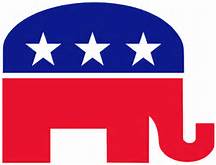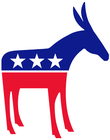“Across the aisle.” “Bipartisan support.” “Third party challenge.” These are some of the terms we take for granted in our political discourse. Are any of us (beside those devoted to, invested in or paid by the Democratic or Republican party) pleased, however, by the often total inability, especially at the national level, to get things done under this system? Is anyone else beside me, who has just been through the 2016 election cycle, extremely frustrated by the contentiousness, the lack of political action, and the intractable partisanship of nearly every issue – while our social and economic problems go unsolved? Is anyone else frustrated that third (and fourth and fifth…) political parties never seem to get any traction in our society? Is anyone else looking for other ways out of this morass?
While our two-party system seems to be hard-wired into our national personality, it is quite rare among other advanced democracies throughout the world. As we have noted in many other previous blog posts, these other nations surpass the United States on almost every quality-of-life measure one can check. In other words, the basic political underpinnings of these highly successful countries differ from ours.
Would it not be to our advantage to examine their political structures, compare them to ours and see if there are pieces that we can borrow or copy to improve the lives of millions of Americans? I am fairly certain that a basic, radical change to our political system will not happen in my lifetime – but I also believe that opening our minds to differences can also be a very fruitful exercise. Opening our minds to a multi-party system, combined with proportional representation in a coalition-style government, is the exercise I am proposing.
First, let us examine some of the problems we constantly encounter with the two-party system and our government composition, which is “winner-take-all” rather than proportional.
- Great division. Is there any doubt that our nation is bitterly divided politically? If the 2016 election proved anything, it was this great division. Republican lawmakers vowed as soon as Barack Obama took his oath of office in 2009 that they would block nearly every policy he proposed – even if some of the ideas were actually their own. And the divide had begun much earlier; the “red state, blue state” color coding of the Electoral College map had been illustrating primaries and elections on news feeds for decades. Once in awhile, there is talk of a purple state or district, but this still rests on the red and blue breakdown. There seems to be little middle ground in our discourse; on most issues, we seem to veer from one extreme to another, and that has proven very unhealthy in many ways.
- Following the devastating loss on November 8, the Democrats are “navel-gazing” and trying to figure out what they stand for and how to articulate that. The GOP, we might recall, did similar soul-searching after their 2012 presidential loss, recognizing in certain quarters that the party needed to attract more Hispanic voters, for instance. Can we not imagine a better model: that the issue is not about party identity but ways to come together and solve real social problems?
- Politics in the halls of Congress and state legislatures is a constant exercise in deal-making and compromise, which may be highly productive; this can also result, though, in an individual legislator having to decide whether to follow the dictates of party leadership or vote one’s conscience. To an average citizen like me, it often seems that a legislator will vote along party lines on an issue because it will help his or her career, suggesting that a politician is more loyal to their party than to the country as a whole. How much statesmanship and true courage do we see from our elected officials – a stance taken contrary to party pressure that would move the country forward?
- In the US, third, fourth and fifth (!) parties get little traction in state politics and almost none at the national level. These parties are often comprised of highly talented and dedicated leaders and followers who have excellent ideas that could truly move our society forward. Without proportional representation, however, they struggle to make themselves heard and in essence have no real place “at the table.” Nationally, third party candidates are often viewed as draining votes from frontrunner candidates and destabilizing the system.
- Identity politics – that is, “political attitudes or positions that focus on the concerns of social groups identified mainly on the basis of gender, race, ethnicity, or sexual orientation” – is extremely important to citizens who have historically faced real discrimination, hostility and violence. The Democratic party has been the supposed home of left-leaning women, people of color, people with disabilities, the LBGTQ community, and others because they feel that the GOP’s record in advancing their sometimes unique causes is inadequate at best. A party made up of such disparate voices, however, is often hopelessly fragmented and has great difficulty gaining traction; when people of color and their allies who have been disenchanted by the system do not vote, it is often in large part because they feel that their voices are not heard and their lives not represented by the major candidates.
- Can any of us disagree that our two-party discourse often runs on lies, fabrications, and slick, misleading advertising? Is it possible that many Americans do not vote, even in national elections, because they are completely turned off by the incessant barrage of negative campaign rhetoric? And in our age of sound bites, social media and fake news, it is extremely difficult to cut through the noise and have sane, rational discussions of issues and policy suggestions. It is much simpler to blindly follow party leadership than to make one’s own independent assessment.
- Our national political identity often vacillates drastically every time there is an election: we go from one extreme to the other. We elect a Democratic President one year and a majority of Republican representatives two years later – and vice versa. The ability to pass legislation – and even to have legislation come up for votes in Congress – is often compromised for years, which is unhealthy for the nation. This situation not only affects Americans but can also be difficult for other countries to know how to deal with the US on international matters.
Once we begin to question the two-party system and see its shortcomings, it becomes easier to envision a new way. The way a multi-party system, combined with a coalition government, usually works in practice is that the parties present a slate of candidates, voters cast their votes for their preferred party, and the parties receive the same proportion of seats in the government that they received of the vote. In contrast, in our system “there is an overriding incentive to put together a coalition that gets you to 50.1 percent. Second-place candidates get nothing. There is no consolation prize.” While we may pride ourselves on this to some extent – Americans love winners! – we can begin to see how damaging it can be. Countries with multi-party systems and coalition governments are far from perfect, and their discussions and debates can often be messy and contentious, but over time, their political atmospheres are considerably more stable – and, it must be noted again, most other advanced democracies are immeasurably more peaceful than the US is.
Here is a random sampling of governance examples and types of parties in Europe that might help us begin to see alternatives to the two-party, winner-take-all system.
- Iceland. Constitutional republic with a multi-party system; not a member of the European Union. The head of state is the President. Executive power is exercised by the Government. Every fourth year the electorate chooses, by secret ballot, 63 representatives to sit in the parliament. “Following each election, the President gives a leader of a political party the authority to form a cabinet, usually beginning with the leader of the largest party. If unsuccessful; the President will ask another political party leader to form a government.”
- Ireland. Parliamentary democracy. The President is the head of state. “There are two Houses of Parliament: Dáil Éireann (House of Representatives) and Seanad Éireann (Senate). The Dáil has 166 members known as Teachtaí Dála (TD), who are elected using proportional representation with a single transferrable vote. . . The current government, elected in 2011, is a coalition between Fine Gael and Labour. The other main political parties represented in the Dáil are Fianna Fáil and Sinn Féin.”
- Netherlands. Parliamentary democracy with a coalition government of several parties. The head of state is the King. The prime minister, the head of the government, usually comes from the party that has won the most seats in the elections. A sampling of the parties in the Netherlands includes the People’s Party for Freedom and Democracy, Labour, the Party for Freedom, Christian Democratic Appeal, and Socialist.
- Norway, one of the world’s most progressive countries; not a member of the European Union. It is a parliamentary democracy and Constitutional Monarchy. Some of the parties that comprise the government include Norwegian Labour, Progress, Conservative, and Social Left. (As an aside, it can be noted that the Norwegian Conservative Party cannot be easily equated with US conservatives; most parties in Europe, in fact, are already further to the left than US Democrats.)
As we can see, these countries’ parties represent a wide range of stances on issues important to the citizenry. Would a multitude of legitimate political parties make any sense in our American context? Let’s try some envisioning; instead of two parties of Democrats and Republicans, what if we had the following or something like it, with the government comprised proportionally of representatives of these parties?
- A party comprising people of color and others who feel they have historically been discriminated against. This coalition might focus on civil rights, prison reform, LBGTQ issues, etc.
- A party focusing on environmental and climate issues. This party might include people who advocate for wildlife and national parks, who strive to strengthen clean air and water legislation, and so on.
- A party focusing on children’s issues, education, and perhaps health.
- A party attempting to “tame” the US version of extreme capitalism and fight for income equality.
- An anti-abortion party. This might also include activists who are in favor of the death penalty and against contraceptives and gay marriage.
- A party for white supremacists and white nationalists. This “alt-right” party, like the others, would thus have a legitimate place at the table – but would also be required to be non-violent and respectful of others’ rights.
As we might begin to see, having a range of parties representing issues and ideas that are dear to Americans’ hearts – rather than continuing to have two parties that can never hope to represent the vast range of opinions – would, when combined with a coalition type of government, start to forge a new way to run the country we love. This probably will not happen anytime soon, but could we begin to do some creative thinking along these lines over the next 2-4 years, perhaps experimenting at the state level? I challenge voters, elected officials, the media, and Americans who do not vote to contemplate these alternatives.
Addendum, Feb. 27, 2017: I just came across this article by former Vermont Governor Howard Dean on the two-party system – take a look!


